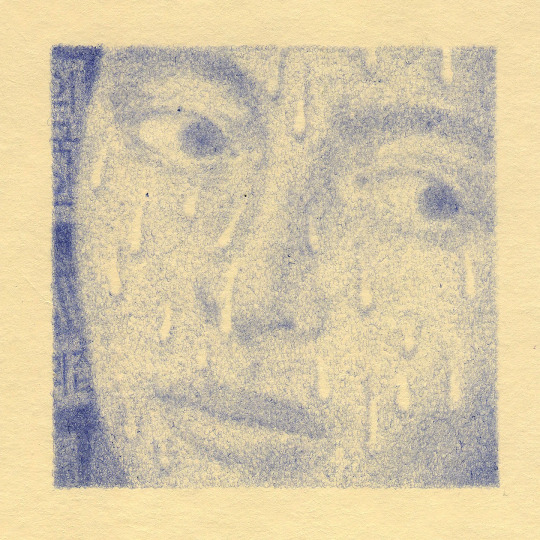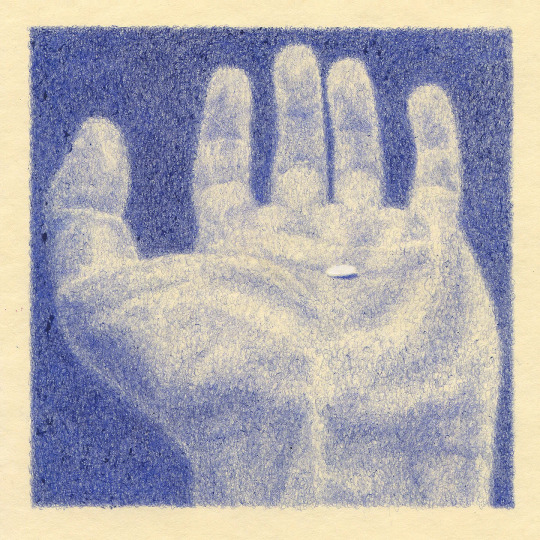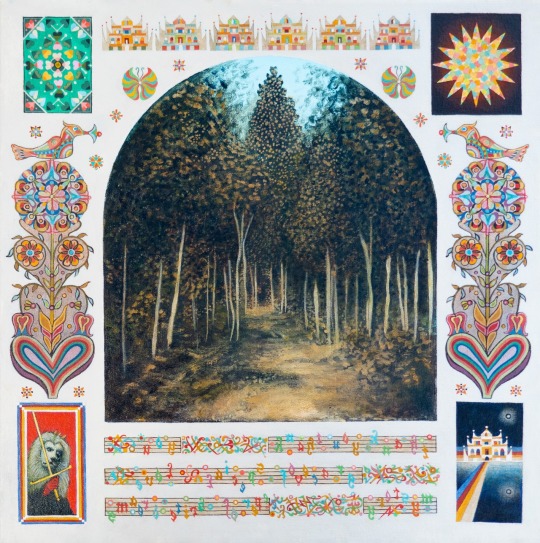Don't wanna be here? Send us removal request.
Note
Hello! I am just starting my journey on reconnecting with my traditional roots as an Italian practitioner. My great grandparents came from Italy in the mid 1900s, but unfortunately passed before I had the pleasure of asking about their practices. Can I ask a good starting point for someone who is trying to reconnect all on her own?
Hello!
I am so happy that you are wanting to reconnect with your roots! I'm sorry you didn't get the opportunity to ask your grandparents, my deepest condolences for your loss.
In terms of resources, my recommendation for anyone starting out is to go to folklore sources or to read books by authors who don't simply reference other witchcraft authors. I highly recommend reading Italian Folk Magic: Rue's Kitchen Witchery by Mary-Grace Fahrun. It's mostly her personal experience with Italian folk-Catholicism and magic with plenty of anecdotes, recipes, superstitions, and various rituals. I think it's probably the best widely available source out there. She also has a youtube channel! In a similar vein, the website Italian Folk Magic has some great posts about Southern Italian and Sicilian magic.
Other online resources I've found useful are Gail Faith Edwards' writings on Southern Italian healers and folk medicine (it's split into 2 parts–– there's a lot of great information if you're into herbalism/ green witchcraft). I also love this article detailing witchcraft history, superstition, and more throughout Italy. It goes into a lot of detail and has some information about herbal properties and their uses as well.
Here are some festivals and traditions from across Italy tied to folk belief: Focara of Novoli, The Campanacci in Basilicata, The Feast of San Domenico and the Ritual of Serpari of Cocullo, Naca Procession in Southern Italy, Dance of the Devils, Celebration of Santa Lucia, The Feast of Mamma Schiavona––There are many others (mostly Saint feasts) that have pre-Christian roots or have significant rituals attached.
Most information that I have collected comes from anthropological and folklore sources that aren't very accessible. There are some videos available of documentary footage of Italian anthropologist Ernesto de Martino's work detailing folk tradition: here's a clip of La Taranta. This documentary isn't in English, however you can still get a lot out of it even if you don't speak Italian (unfortunately there are no subtitles). The documentarian that worked with de Martino, Luigi Di Gianni gives some of his recollections here. Here is a clip documenting the Feast of Mamma Schiavona. Otherwise, everything else is behind a paywall on sites like jstor, sagepub, and other academic publishers. I would recommend reading anything by anthropologist and folklorist Sabina Magliocco (I have copies of her work), as well as de Martino's Magic: A Theory from the South (which I also have a pdf of). The academic texts can be a little dense and daunting, but they're worth the read.
I have uploaded some of what I have to WeTransfer, but it will only be up for 1 week (until July 10th) so if anyone else would like to download them, you can for a limited time!
128 notes
·
View notes
Note
Are there any non-fiction you can recommend for people who are fascinated by your blog (especially the elements of dark eroticism, morbidity and horror)?
🖤 love that you are loving!
i will try to stick to non-fic (also refraining as best i can from re-recommending texts from previous asks but there is of course bound to be some overlap): - The Severed Head: Capital Visions, Julia Kristeva -> read about Aubrey Beardsley's illustrations for Salomé (x, x)

and supplement w Baudelaire's Une Martyre "in which the narrator lovingly contemplates the beauty of a woman's severed head at rest upon a nightstand"
- Masochism: Coldness and Cruelty & Venus in Furs, Deleuze - The Sadeian Woman: And the Ideology of Pornography, Angela Carter - Aesthetic Sexuality: A Literary History of Sadomasochism, Romana Byrne - Perverse Desire and the Ambiguous Icon, Allen S. Weiss - "Must We Burn Sade?", Simone de Beauvoir -> read also about Erzsébet Báthory, the Bloody Countess. supplement your readings with Borowcyzk's Immoral Tales (1973), Julie Delpy's The Countess (2009), Alejandra Pizarnik's La Condesa Sangrienta and/or, if you have the stomach for it:
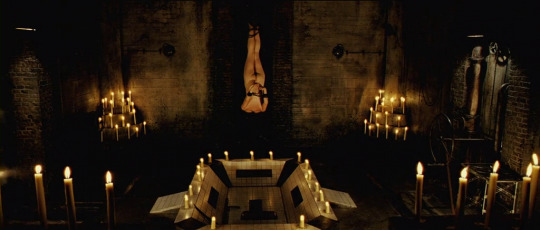

Lorna's death in Hostel Pt II (2007), inspired by the Countess^
- Anaïs Nin's diaries + Henry and June - Abject Eroticism in Northern Renaissance Art, Yvonne Owens
Hans Baldung Grien "gave powerful visual expression to late medieval tropes and stereotypes, such as the poison maiden, venomous virgin, the Fall of Man, 'death and the maiden' and other motifs and eschatological themes, which mingled abject and erotic qualities in the female body"
- Satanic Feminism: Lucifer as the Liberator of Woman in Nineteenth-Century Culture, Per Faxneld - The Library of Esoterica's Witchcraft - the biographical Taschen on H.R. Giger's oeuvre—biomechanical, Lovecraftian-tentacular fused limbs, bodies, systems, overtly phallic/yonic symbology, darkly psychedelic... very much fantastically erotic; I have my eye on the 40th Anniversary Edition
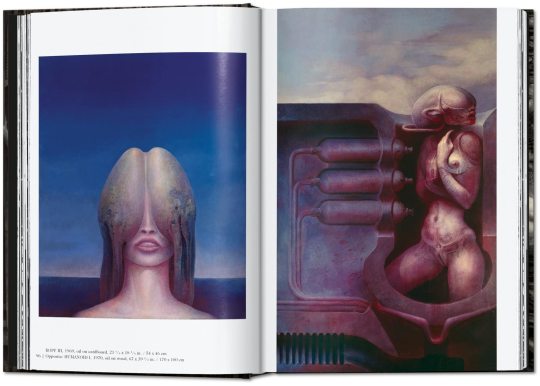
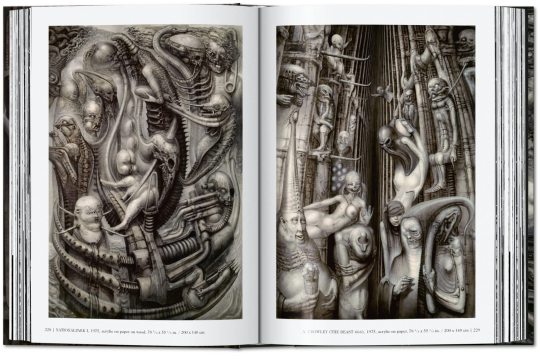
Giger, as we know, having designed the xenomorph from the Alien (1979) series to have an intensely sexual evolution:

- DEFINITELY read about+explore ero guro (see also: Bataille's L'histoire de l'œil / Story of the Eye! though it is fiction)
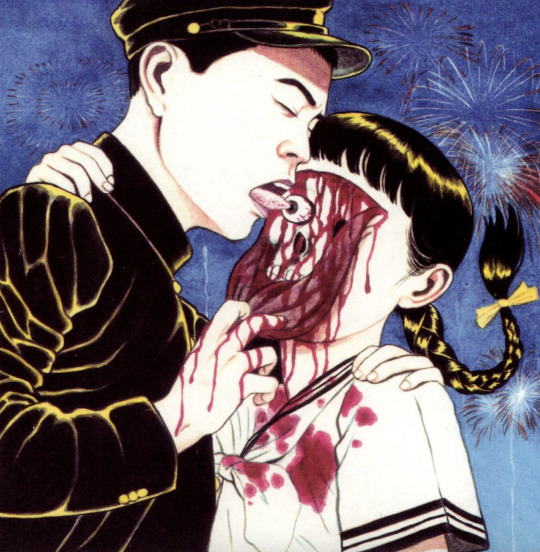
brief introductory articles here and here but it's truly so rich and decadent... delve into it!! film, lit, manga, history, so on... -> watch Nagisa Ōshima's In The Realm Of The Senses (1976) too
- if you can read French by any chance, Le Corps Souillé (The Soiled Body) by Eric Falardeau looks incredible; if not, this excerpt alone is delightfully provocative even in isolation - similarly, L'espirit de plaisir: Une histoire de la sexualité et de l’érotisme au Japon (The Spirit of Pleasure: A History of Sexuality and Eroticism in Japan) by Philippe Pons and Pierre-François Souyri is something I'm hoping might see an English translation

^an excerpt from an interview with the authors
- The Art of Cruelty + The Red Parts, Maggie Nelson - Crucial Interventions: An Illustrated Treatise on the Principles & Practice of Nineteenth-Century Surgery, Richard Barnett - The Butchering Art, Lindsey Fitzharris - Death, Disease and Dissection, Suzie Grogan - The Theatre and Its Double, Antonin Artaud - Men, Women, and Chainsaws, Carol J. Clover - House of Psychotic Women, Kier-La Janisse - The Monstrous-Feminine, Barbara Creed - Dead Blondes and Bad Mothers, Sady Doyle - The Lady From The Black Lagoon, Mallory O'Meara
475 notes
·
View notes
Text
The instant is the reciprocal and contradictory envelopment of the before by the after. One is still what one is going to cease to be and already what one is going to become. One lives one’s death, one dies one’s life. One feels oneself to be one’s own self and another; the eternal is present in an atom of duration. In the midst of the fullest life, one has a foreboding that one will merely survive; one is afraid of the future. It is the time of anguish and of heroism, of pleasure and destruction. An instant is sufficient to destroy, to enjoy, to kill, to be killed, to make one’s fortune at the turn of a card.
Jean-Paul Sartre, tr. Bernard Frechtman, “Saint Genet: Actor and Martyr”
70 notes
·
View notes
Text
I grow our own vegetables. Many hybrid and heirloom varieties are bred for flavor rather than for commercial appeal and travel. There are entire species on the allotment that you can’t easily buy in stores because of this - like salsify, a root vegetable that tastes of fish and shellfish. Our neighbours happily take it to make vegan latkes of alarming similarity to fishcakes. You cannot sell it in stores because - despite looking like a white parsnip - it turns brown when you pick it if you scrape/bruise/cut the white root in any way, or damage the delicate little hairs, for some reason, it BLEEDS RED and is very upsetting to look at.
There are whole classes of foods like this. Foods that just don’t ship well or look good on supermarket shelves. Forbidden fruits. Vegetables that bleed and taste like meat. Sorry about this
85K notes
·
View notes
Photo
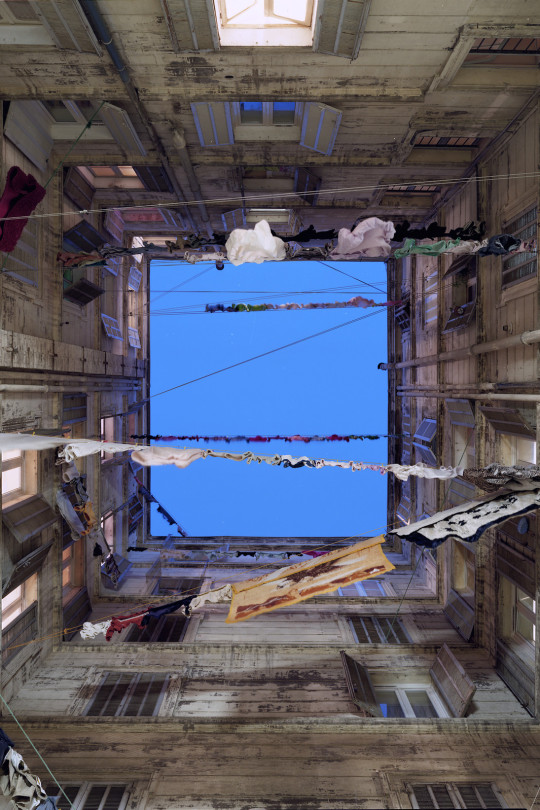


Marie Bovo (Spanish, b.1967)
Cour Intérieure series - 2009
58K notes
·
View notes
Text
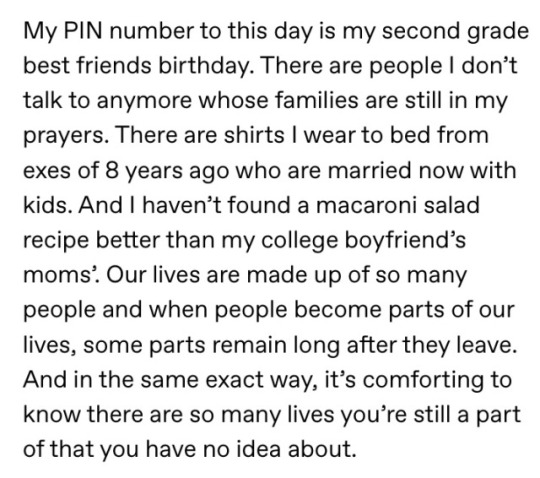
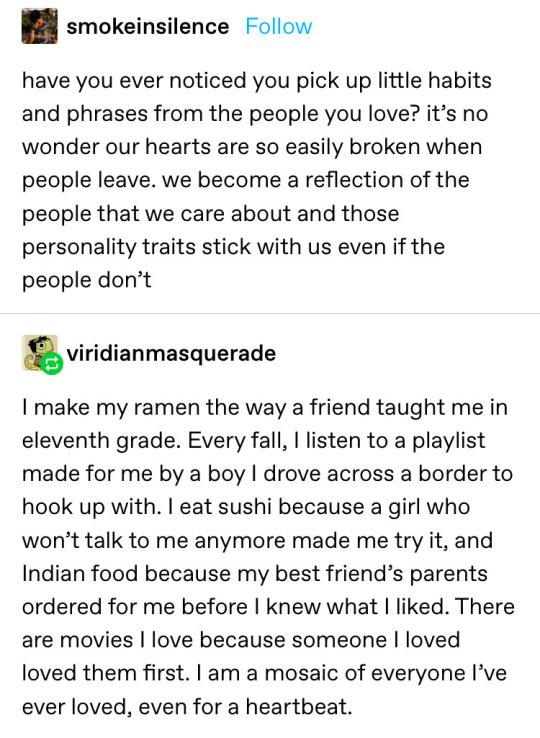
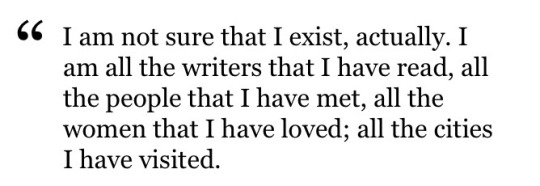
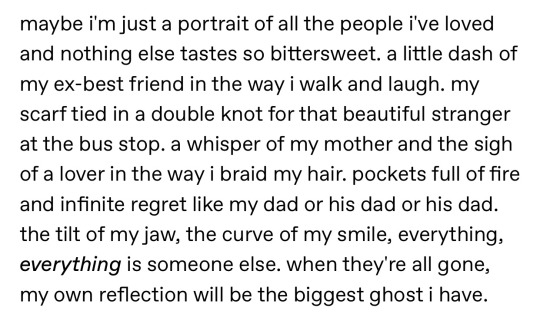



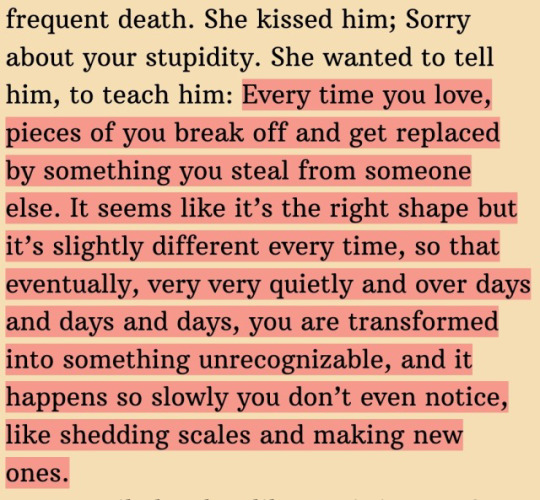
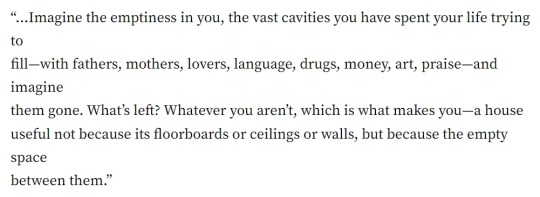
@i-wrotethisforme // Jorge Louis Berges // @smokeinsilence //@viridianmasquerade //Jorge Louis Berges // @honeytuesday // Kaveh Akbar // F. Scott Fitzgerald // AKR //Olivie Blake, from “Alone With You in the Ether” // Kaveh Akbar, Pilgrimage
49K notes
·
View notes
Photo










The Everlasting Bloom of Beauty (Tanigami Konan)
“Tanigami Konan was born 1879 in Hyogo prefecture and is a well known Kacho-e (birds and flowers) Nihon-ga artist. He was the first Japanese artist to paint Western flowers and is renown for his vivid, true-to-life painting of flowers.
Tanigami Konan produced five volumes of pictures of Western plants which were published by Unsodo circa 1917/18. This series is called ‘Seiyo Soka Zofu’, (A Picture Album of Western Plants and Flowers). Depicting lush flowers and exotic plants in full bloom and organised as a visual record of garden flowers, two volumes each were devoted to the spring and summer seasons, while the 5th volume combined the flowers and plants that flourished in the autumn and winter seasons.
Konan is mostly known for his signature peony series. In 1917 he was selected to produce a series of twenty-four peony prints for the Teiten (Imperial Exhibition). I do not know much about this series (available information is very scant) so I will allow Fuji Arts to describe this series: The Peony Series from the Imperial Exhibition: In 1917, one of Japan’s famous naturalist artists, Tanigami Konan, was chosen to produce a series of beautiful peony prints for the Teiten (Imperial Exhibition). Because of the importance of this auspicious occasion, all of the traditional Japanese works of art were to be produced to the highest standards. The Peony series by Konan was one of those selected traditional Japanese works. Konan designed and printed a lovely set of 24 peonies.These beautiful original woodblock prints were printed in an extra large format, and are unusually large for kacho-e woodblock prints. Bold, bright, and beautiful, they are some of the finest floral designs ever printed in the woodblock print world. They are all excellent quality, finely printed on beautiful handmade paper with a ‘natural’ untrimmed edge. Unlike some of the smaller and more commonly produced floral subjects in the Japanese woodblock print world, and in the botanical print world in general, these Tanigami Konan peony prints are large, exceptional, eye-catching designs that would make a beautiful traditional Japanese centerpiece in any room.”
Sample Works:
1. Cereus Cactus
2. Canna Lily
3. Dahlia
4. Lychnis, Mallow
5. Delphinium
6. Laelia Orchid
7. Laelia Blanda, Dendrobium Orchid
8. Snapdragon
9. Petunia
10. Poinsettia, Dracaena
641 notes
·
View notes
Photo

Mars in the 7th house - Little Girl and the Wolf
The story of Little Red Riding Hood is a Mars in the 7th rendition. We are reminded of the mirror mirror 7th house mask, and the scarlet robe of the endangered child, the primitive nature of the Mars and Aries archetype. The condition of Mars in the 7th focuses on extending beyond ‘black and white’ perspectives of other people. Just as Red uncovers the brutal truth that the big bad wolf uses the disguise of her sweet grandmother, the Mars in the 7th individual discovers the brutal truth about people - nothing and no-one is ever what they seem.
Mars is not comfortable in the 7th house, and Aphrodite is also very disturbed by the war and the wrath. This tension is enough to crack the Venus mirror, and these fractures are projected from within through these black and white disconnections. As Little Red must integrate the monster with her grandmother, the individual must do the same. However, before she can do this with other people, she must first practice and repair the fractures in herself. It takes the necessary inner work that is focused on developing a deeper self-knowledge and self-understanding. When she can unify her own co-existing good and bad characteristics, she is no longer limited by viewing other people through either the lens of light or shadow.
Keep reading
405 notes
·
View notes
Text
Much like the kitchen table, it is the everyday experiences of teaching each other about native plants (Carroll 2015), making shared dinners as a community (Mei-Singh 2020), and singing freedom songs (Ranganathan and Bratman 2019) that make structural transformations possible. One of the powerful logics for reclaiming abolitionist politics is to relearn many of the lessons that have been lost or erased from histories of building solidarity toward liberation. […]
—
[We] can learn from both Indigenous studies and the Black radical tradition that Aleut scholar Eve Tuck (2009) summarises as refusing damage-based narratives […]. Gilmore (2017: 227) explains that “abolition geography starts from the homely premise that freedom is a place”. She goes on to suggest that “the radical tradition from which abolition geography draws meaning and method goes back in time-space not in order to abolish history, but rather to find alternatives to the despairing sense that so much change, in retrospect, seems only ever to have been displacement and redistribution of human sacrifice” […]. Instead, it is through rethinking deep histories that we can come to new theories. We can see coherence in the core notion of abolition across Du Bois’ […] and Gilmore’s geography, when Gilmore suggests (in Petijean 2018), “since slavery ending one day doesn’t tell you anything about the next day – Du Bois set out to show what the next day, and days thereafter, looked like […]. So abolition is a theory of change […]. It’s about making things”. Likewise, Estes’ (2019) Our History is the Future posits a theory of change and a way of understanding Indigenous life and politics that is shaped by settler colonialism rife with environmental destruction […] without being defined by it. […]
As adrienne maree brown (2017: 53) succinctly points out, “what we practice at the small scale sets the patterns for the whole system”. […]
—
Abolition is not just about a vision, it is about our everyday practice. When asked about different forms of organising (Loyd 2012), […] Gilmore said that “if abolitionists are […] committed to the possibility of full and rich lives for everybody, then that would mean that […] distinctions and categorisations that divide us – innocent/guilty; documented/not […]; citizen/not-citizen – would have to yield in favor of other things, like the right to water, the right to air […].” An abolition ecology not only thinks through the priorities of difference, but also whose right to land and water should shape our discussions – including our non-human relations. […]
The stories we tell and the songs we sing reflect a long history of solidarities to realise abolition. These abolitionist narratives signal the articulation of the everyday and high theory in their emphasis on solidarities expressed in land relations. […] [S]patial logics […] connect the ghetto to the suburbs, the plantation to the colonial port, the reservation to the wilderness […]. Because control over land has always been so deeply institutionalised through everyday white supremacist practice, focusing efforts to name, and dismantle the existing institutions […] is necessary. […].
Abolition did not end the day chattel slavery ceased in the US […]. Likewise, the violence of environmental racism does not stop with each individual site fight that stops the building of a prison that will harm people and the land […]. In our present conjuncture, abolition ecologies rely on the work of solidarities amongst communities, rural and urban, Indigenous and settler, across peoples of colour and white co-conspirators to come together. […] [C]ommunities […] can reclaim their freedom dreams where they live, work and play – through radical acts of place-making in the face of white supremacist violence that assumes their dispossession.
——-
Text by: Nik Heynen and Megan Ybarra. On Abolition Ecologies and Making “Freedom as a Place”. An introduction to Antipode Volume 53 Issue 1. January 2021. [Bold emphasis and some paragraph breaks added by me.]
462 notes
·
View notes
Text
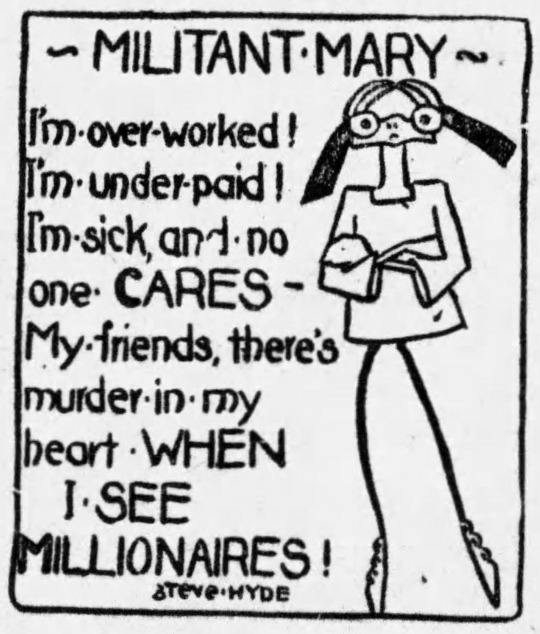
Elizabeth Kirkman Fitzhugh, Militant Mary
November 13, 1914
82K notes
·
View notes
Text
10 Female Written Short Stories Everyone Should Read
I have seen a post circulating for a while that lists 10 short stories everyone should read and, while these are great works, most of them are older and written by white men. I wanted to make a modern list that features fresh, fantastic and under represented voices. Enjoy!
1. A Temporary Matter by Jhumpa Lahiri — A couple in a failing marriage share secrets during a blackout.
2. Stone Animals by Kelly Link — A family moves into a haunted house.
3. Reeling for the Empire by Karen Russell — Women are sold by their families to a silk factory, where they are slowly transformed into human silkworms.
4. Call My Name by Aimee Bender — A woman wearing a ball gown secretly auditions men on the subway.
5. The Man on the Stairs by Miranda July — A woman wakes up to a noise on the stairs.
6. Brownies by ZZ Packer — Rival Girl Scout troops are separated by race.
7. City of My Dreams by Zsuzi Gartner — A woman works at a shop selling food-inspired soap and tries not to think about her past.
8. A Good Man is Hard to Find by Flannery O’Connor — A family drives from Georgia to Florida, even though a serial killer is on the loose.
9. Hitting Budapest by NoViolet Bulawayo — A group of children, led by a girl named Darling, travel to a rich neighborhood to steal guavas.
10. You’re Ugly, Too by Lorrie Moore — A history professor flies to Manhattan to spend Halloween weekend with her younger sister.
72K notes
·
View notes
Note
favourite poems about the forest?
edward thomas, “lights out”: i must enter, and leave, alone, / i know not how.
gabriele d’annunzio, “the rain in the pinewood”: rain falls on your black eyelashes / so that you seem to weep / but from pleasure
evie shockley, “where you are planted”: we settle into still pools of humidity, moss- / dark, beneath live oaks
amy gerstler, “bon courage”: a forest appears / to a young girl one morning as she combs / the dreams out of her hair.
richard levine, “in a blue wood”: the faceless couple in van gogh’s blue wood, is walking / where there is no path
siegfried sassoon, “dream-forest”: where sunshine flecks the green, / through towering woods my way / goes winding all the day.
robert frost, “stopping by woods on a snowy evening”: and miles to go before I sleep, / and miles to go before I sleep.
mary oliver, “sleeping in the forest” and “black oaks”: and you can’t keep me from the woods, from the tonnage / of their shoulders, and their shining green hair.
john keats, “ode to psyche”: far, far around shall those dark-cluster’d trees / fledge the wild-ridged mountains steep by steep
r.s. thomas, “forest dwellers”: who called them forth to walk / in the green light, their thoughts / on darkness?
léonie adams, “recollection of the wood”: toward that caress of the boughs a summer’s night / illimitable in fragrance and in sound.
gabriela mistral, “pine forest”: the night watches over its creatures, / except for the pine trees that never change.
kenneth rexroth, “falling leaves and early snow”: between the black pines lie narrow bands of moonlight, / glimmering with floating snow.
william carlos williams, “epitaph”
h.d., “the helmsman”: we forgot—we worshipped, / we parted green from green
cole swensen, “five landscapes”: the trees are half air. they fissure the sky;
pablo neruda, “lost in the forest”: wakening from the dreaming forest there, the hazel-sprig / sang under my tongue
atsuro riley, “thicket”: for darkling green; / for thorn-surround.
9K notes
·
View notes
Text
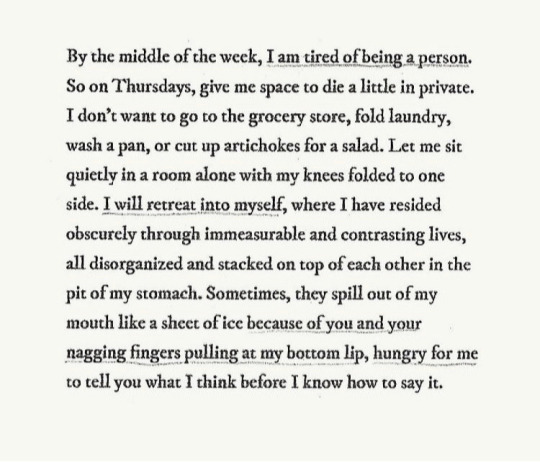


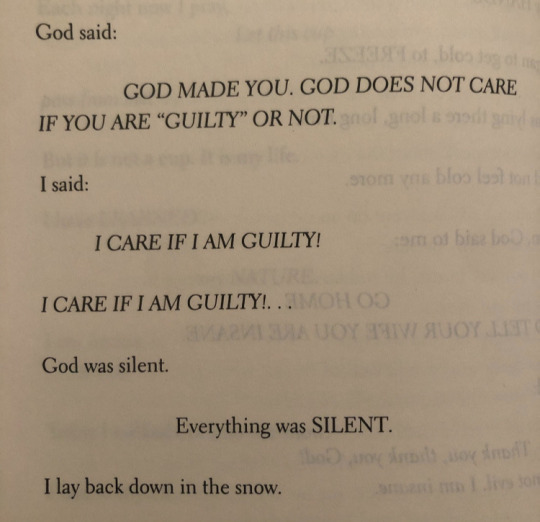
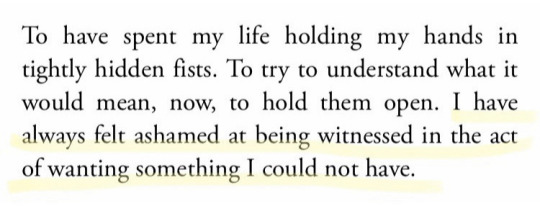



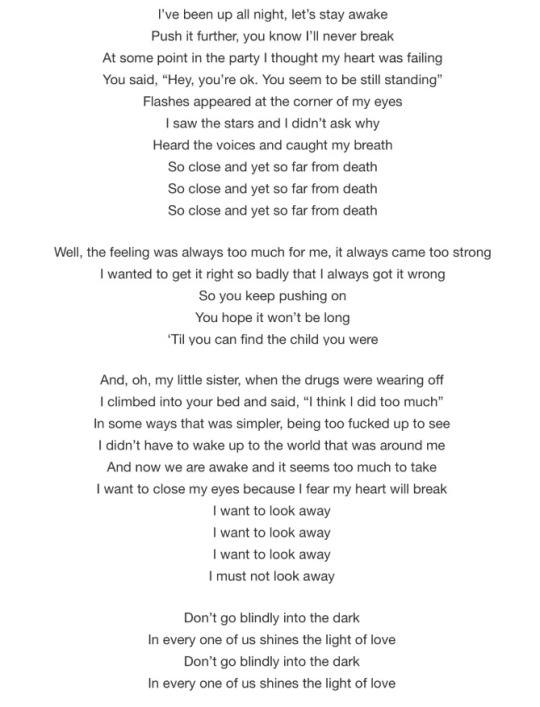
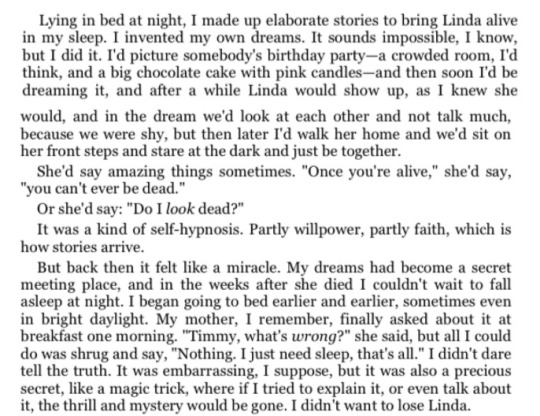
I don't have a word for this
intangible - madisen kuhn // 1Q84 - haruki murakami // hands that let go - katie maria // the war of vaslav nijinsky - frank bidart // so we must meet apart - jennifer s. cheng // meanwhile - richard siken // the hours - micheal cunningham // nightbitch - rachel yoder // light of love - florence and the machine // the things they carried - tim o'brien
3K notes
·
View notes
Text
Archetypes and astrology - the influence of the planets 🪐

pic not mine.
I see planetary aspects and movements generally as part of a correspondence between the archetypal meanings of astrology and human experiences. I don't see that the planets necessarily emanate energies or determine anything. In the way we speak, it sounds like they are determining.
But in reality, it's about the planets functioning as a representation of important parts of our lives, and their movement tends to coincide with important life events here on Earth, so they don't cause things, they are simultaneous with what occur in our lives, but not by causality, but by meaning. Taking Carl Jung's concept of synchronicity, we can better understand the meaning of placements, planetary aspects and transits in our lives. I'm gonna explain.
Synchronicity makes us realize things about ourselves that we never noticed. It is not causals, something that was predetermined to occur at that moment without our participation. If that were the case, all people would be much more evolved after their cycles with Saturn and several solar returns. Saturn would have "done it all by itself." We would live in a beautiful world with evolved people and more aware of their difficulties.
Archetypes exist. Their contents are what lead us to have certain behaviors. An example of archetypal content - Wise Old Man archetype: Saturn in the 9th house, a person who needs to go through a period of maturity and maturation in this area (from the 9th house). The planetary placements of our natal chart can be seen as the possible contents of such archetypes. Another example: The Wounded Healer Archetype has its content defined by our Chiron placement.
However, not everything is lived in the most ideal way, and not everything is as expected, as it all depends on the choices we make. The archetype that involves the idea of the Wise Old Man, for example, which can be understood by Saturn and its influences on us: we only feel the manifestation of this archetype when we are open to it. We only become wiser and more mature when we accept the idea that we need to evolve at a certain point.
This means that astrology is there to help us recognize a good part of the content of such archetypes, which already play an important role in our personality, and from the moment we recognize such archetypes, we can be more in harmony with our Self.
As archetypes are part of our unconscious, we can say that there is a personality tendency, a design of what seems ideal to follow, and that we won't always follow, and like everything that is UNCONSCIOUS, this will only come to light if we try to enter into contact with that part of our personality.
How to know yourself if there are no efforts? There is no way the planets, by themselves, force certain behaviors without us wanting it. If that were the case, it would be particularly good to see most people much more evolved and mature after a Saturn Return.
Instead, archetypes are brought to the surface as we experience certain experiences, as we make choices, and as we seek to know our personality and become OPEN to such experiences. It is not causal. And it is precisely because this is not the case that, when an encounter between you and your personality occurs, we can speak of a possible synchronicity.
In addition, when studying Analytical Psychology, we can observe that certain archetypes will tend to bring consequences to our lives. This is the case of the Shadow archetype, which brings extremely uncomfortable situations to our ego as we don't confront ourselves about this part of our personality. Shadow is part of the individuation process and without an awareness of our shadow we can't find our true Self.
No wonder I see people in the world succumbing because, although material and earthly life seems very comfortable (or even when it is complicated in this part of life), they are deeply confused and lost inside. People that are completely far from knowing their Shadow, their personality that they deny, far from who they could be, lacking in self-knowledge.
In this sense, we can say that the planets as archetypes bring influences on us. It is as if the planets are not the main actors, but the engines, the fuels for things to happen over time - they touch archetypes (structures, patterns, ideas) that already exist within us.
Archetypes are like patterns, structures common to all of us, which exist and whose contents will be defined depending on who we are. We all have archetypes - Shadow, Persona, Anima, Animus, Sage, etc. but how will each manifest in our lives? It will depend on who we are, our personal experiences and also our natal chart.
And in the manifestation of the planets as fuel to make something that already exists occur, we can find the meaning of synchronicity. When you observe that from a moment you start to have an insight, and this insight tends to change your life (or it can start a phase of change in your life), and such insight have a lot to do with a planetary transit or natal placement, this can be called synchronicity. You tend to find your Self from the impulse of planetary patterns.
Still about archetypes.
It is as if there is a "system", a structure with some patterns common to all individuals, which impacts us from time to time. Patterns and structures that exist for everyone and that tend to impact us at some level, even if we are not so aware of it, but that we also need become aware so that we have greater contact and evolution.
Thus, the meanings of planets, signs, aspects, houses, etc. can be seen as the archetypes that we carry in our lives and that actually impact us. But it doesn't impact us causally, as if the planet were there to influence us as a necessarily physical force. No, it's a much more psychological issue.
In the end, it's as if we all have connections in our minds with the meanings of the planets, the signs - because we all have such archetypes in our personality. Complex, no?
And when the planets perform a certain movement, such archetypes (which ALREADY exist in our unconscious mind, more precisely in the collective unconscious) are activated, and we are led to connect with part of the cosmos that have always been there, even within us, but that we were never brought into contact with.
“With a little self-criticism one can see through the shadow—so far as its nature is personal. But when it appears as an archetype, one encounters the same difficulties as with anima and animus. In other words, it is quite within the bounds of possibility for a man to recognize the relative evil of his nature, but it is a rare and shattering experience for him to gaze into the face of absolute evil.” - Carl Jung on "Aion: Researches into the Phenomenology of the Self"
And as every archetype has its specific content, each person will tend to live a planetary aspect and movement in a certain way. I exemplify.
Jung's archetype involving Pluto can be seen as that of the Shadow, as it brings out parts of our personality that we tend not to face so easily (whether good or negative things that we repress and deny, in addition to many other meanings), but that they are parts with such force that they can consume us, make our behaviors somewhat confused and obsessed with controlling the Shadow's uncomfortable feeling.
With that in mind, let's imagine a very intense but rare disharmonious aspect of Pluto that happens from time to time.
How will it manifest itself for each one and for the society in general?
How I said above, I don't see the planet being able to determine how things will be, nor determining it in a uniform and fully fixed way for everyone. It all depends on how we, as a collectivity, are dealing with our collective unconscious, our transpersonal experience.
Also, of course our predispositions, our archetype contents and CHOICES will determine how that aspect will work. And we also must remember that we have a lot of free will, and it was this free will that allowed us to create ways of living in society, the mechanisms of social control. I say this to remind you of one thing: There are people who make decisions for us. It will make sense soon.
A person who is very aware of the manifestation of her Pluto placement in her personality, when dealing with such an aspect, may have a certain ease or less difficulty. The way a person has been dealing with their Shadow archetype and, subsequently, with their placement - constructively or negatively - can also define how they will take advantage of the archetypal influence of the Pluto aspect.
Now a person who has little consciousness, is flooded in his Shadow, has repressions, very poorly processed internal issues, lives trapped in his ego, in the influence of such aspect of Pluto, may have behaviors that are negative and tense, not positive and constructive, especially as he is completely unaware of this part of his personality.
When I mentioned people who make decisions for us (despite our ability to participate in certain situations, especially when electing them), I mean that: certain issues in the world depend a lot on the way the government him/herself decides to act, not only an "astral and causal" influence, but because he/she, in his/her archetypal world, has such predispositions.
Still thinking about Pluto aspect. Can one government or several governments be impacted? Yes, of course they are, they are individuals, they have personalities and unfortunately or not they tend to act in an individual way, based on what they think is best.
They can be impacted by the Pluto aspect of the example in the sense that the aspect activates such archetypal dispositions. An aspect of Pluto, for example, can trigger a thirst for power or a quest for transformation. A great desire to dominate or to bring social problems to the surface, scandals.
It may seem confusing to understand this view, but I think like this:
a planet is not directly influencing me in the sense that it acts by itself, but, when it moves, it is activating what already exists in the unconscious mind of all of us (the archetypes)
Wise old man archetype (Saturn placement), Shadow archetype (Pluto placement), Wounded healer (Chiron placement) and so on. And the archetype will be "activated" depending on our experiences, our tendencies, and our stellar design (natal chart).
All planets, signs, houses can relate to some archetype. And I can say that in both individual and mundane astrology, the archetypes to be most touched in our experience will depend on our natal chart and collective experiences. Planets are just completing something that seems to exist long before their own motion. Can you understand?
We need to accept that things are much more complex, and that at the same time we can be so much more connected to it than we realize.
In my view, from the perspective of the Analytical Psychology, since archetypes are part of the collective unconscious, planetary movements only influence to make such archetypes stronger in each of us and/or in the collectivity in each period.
What created these archetypes is perhaps the biggest question, one of many questions that permeate human existence (but that can also be discussed).
And that's why having a holistic (= non-reductionist and simplistic) view of all this seems to be much more appropriate.
In doing so, we consider our role in the meanings of placements, understanding that we are fundamental keys in the RESULT of planetary aspects and movements, and not just as if the planets were responsible for everything.
It is not about causalism, but about understanding that from the moment we are born, we have archetypal tendencies in our personality - whose content will be better defined with the passage of time, with our choices and desire to know our self.
58 notes
·
View notes





